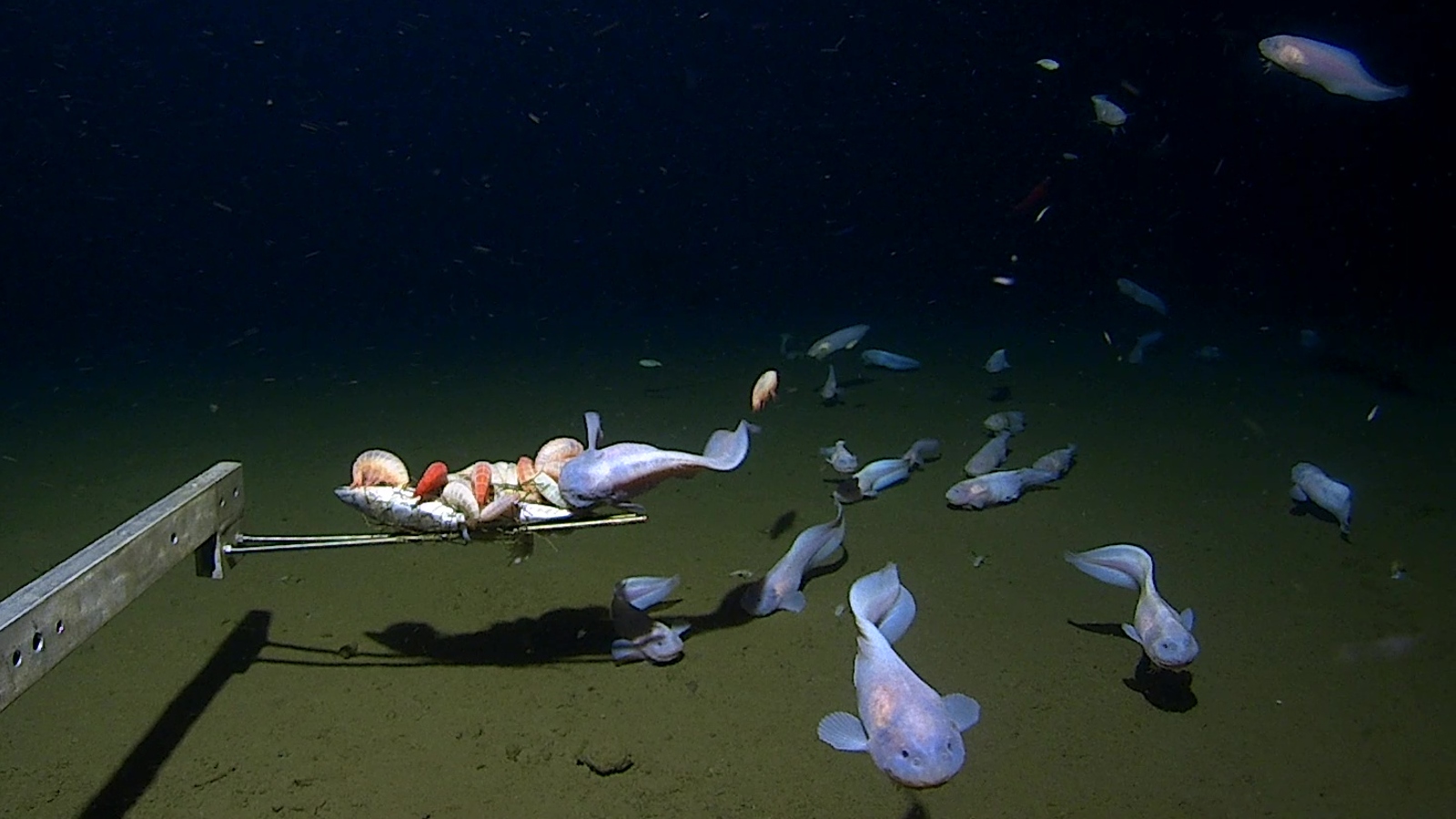Deepest-dwelling fish ever seen is a ghostly snailfish spotted more than 27,000 feet beneath the ocean surface
The never-before-seen fish was spotted 5 miles below the ocean's surface in the Izu-Ogasawara Trench near Japan.
A ghostly white snailfish has unknowingly smashed the record for the deepest fish ever seen after it was filmed at more than 27,000 feet beneath the ocean surface.
Scientists on board the research vessel DSSV Pressure Drop stumbled across the snailfish, which is likely a juvenile, in September 2022 while using a remotely operated submersible attached with a baited camera in the Izu-Ogasawara Trench in the western Pacific, near Japan. The snailfish species is unknown, but scientists believe it belongs to the genus Pseudoliparis. It was spotted at a record-breaking depth of 27,349 feet (8,336 meters).
The previous record holder for the deepest fish ever filmed was a Mariana snailfish (Pseudoliparis swirei), which was seen lurking at a depth of 26,831 feet (8,178 m) in the Mariana Trench — the deepest known ocean trench on Earth, which is located to the south of the Izu-Ogasawara Trench.
During the recent expedition near Japan, researchers also caught two snailfish from the species Pseudoliparis belyaevi in the Japan Trench, located to the north of the Izu-Ogasawara Trench, in baited traps set at a depth of 26,319 feet (8,022 m). This makes them the deepest fish ever caught by humans.
Related: 10 bizarre deep sea creatures found in 2022
There are more than 400 known species of snailfish, which all belong to the family Liparidae. They are found in shallow coastal waters all the way down to some of the deepest spots in Earth's oceans.
Deep-dwelling snailfish, like the various record-breakers in the genus Pseudoliparis, can withstand pressure equivalent to more than 800 atmospheres, which is enough force to crush most living organisms. To do this, snailfish have evolved without swim bladders, which are air-filled sacs that provide buoyancy to most fish species. They have also replaced their scales with a gelatinous layer that protects them from the crushing depths, expedition lead scientist Alan Jamieson, a marine biologist at the University of Western Australia, told The Guardian. The snailfish also contain a fluid called osmolyte, which helps protect them on a cellular level, he said.
Get the world’s most fascinating discoveries delivered straight to your inbox.
It is not surprising that the record-breaking snailfish was a juvenile. Among most snailfish species, the young are specially adapted to live in deeper waters than adults. This protects the vulnerable youngsters from potential predators that can't venture deep enough to catch them, researchers wrote in a statement.
The new footage suggests that snailfish in the Japanese trenches may be much more abundant than similar species in other ocean trenches, such as the Mariana Trench. But it is unclear why this is the case, researchers wrote in the statement.
The researchers hope to return to the two trenches near Japan — and the nearby Ryukyu Trench — to continue their research into the record-breaking snailfish and look for other bizarre deep sea creatures.
"The Japanese trenches were incredible places to explore," Jamieson said in the statement. "They are so rich in life, even all the way at the bottom." Until now, nobody had ever seen or caught a fish in the Izu-Ogasawara Trench, so there is plenty more to find, he added.
Editor's note: Updated at 8:57 p.m. EDT on April 6 to change the image credits from The University of Western Australia to Caladan Oceanic.

Harry is a U.K.-based senior staff writer at Live Science. He studied marine biology at the University of Exeter before training to become a journalist. He covers a wide range of topics including space exploration, planetary science, space weather, climate change, animal behavior and paleontology. His recent work on the solar maximum won "best space submission" at the 2024 Aerospace Media Awards and was shortlisted in the "top scoop" category at the NCTJ Awards for Excellence in 2023. He also writes Live Science's weekly Earth from space series.



